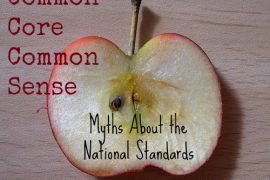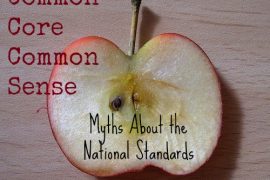Whether the story originates from a study or a few well placed numbers would help drive home a salient point, math is as much a part of modern journalism as a catchy lede or the perfect source. But even with great math skills, journalists are in danger of falling into several traps — and unintentionally misleading their readers. Don’t make these mistakes!
Confusing mean and median
In terms of computations, these are really easy ideas. The mean is the the arithmetic or simple average, while median is the middle value in a set of data arranged from least to greatest. But when should you use mean? And when is the median recommended?
The mean is best for data that is really similar or for measurements like grades, weight or height. Because of the way it is calculated, the mean is influenced by outliers — one or two very large or very small values in the data. These outliers skew the mean, misrepresenting the data set.
Using the median eliminates the chance for an outlier to skew the data. That’s because the extremes are left exactly where they should be — at the extremes. For that reason, medians are often used for dollar values, like home prices or salaries.
Drawing conclusions not explicitly stated in a study
We’ve all seen those stories — coffee will kill you one day and save your life the next. These whiplash-inducing moments may not be the fault of bad research. Instead a reporter or editor could be connecting research results to outcomes that are not revealed at all.
Drawing conclusions is tricky business that should be left to the pros (statisticians in this case). So while it may be tempting to connect A to B, it’s a good idea to double check what the study results actually say.
Not going to the original source
These days, we writers get story ideas from a variety of sources: press releases, articles, and even social media. But when it comes to data, there’s a lot that can happen between the research and its dissemination.
It’s critical to go directly to the original source, rather than pull numbers and conclusions from third parties (yes, even university press releases). Read the study. Call the organization or researcher making these claims.
Using bad data
This pitfall is related to the previous one. If the numbers are wrong in the press release, you risk perpetuating the mistake.
However, it’s also important to consider the original source. Highly partisan or idealogical organizations are often not the best sources for reliable data. Train yourself to be extra skeptical, even of sources that are considered trustworthy. The integrity of your story depends on your digging a little deeper.
Reporting skewed chart data
Pictures are pretty. And while they may paint thousands of words, that story could well be a fairy tale.
An important part of interpreting charts is to carefully consider if the data is properly shown. Do the pie pieces add up to more than 100 percent? Does the range shown on the vertical axis of a line graph make the data seem flatter than it actually is? Sometimes these mistakes are made innocently. Other times, misleading charts are intentional. It’s your job to check these charts for inaccuracies.
Journalists don’t need to be mathematicians, but we do need to question numbers, just as we would question sources. And mostly, you don’t need fancy computations or deep statistical knowledge. Instead, use your natural curiosity and skepticism to be sure that your numbers don’t lie.
Photo Credit: kohlmann.sascha via Compfight cc
Do you have other potential pitfalls to add? Share in the comments section. Or ask questions about the ones listed here! And if you want more details about the math of writing, pick up a copy of Math for Writers, the only math book that most writers and journalists need. Also, look for my upcoming Statistics for Writers course, being offered online later this fall.
















